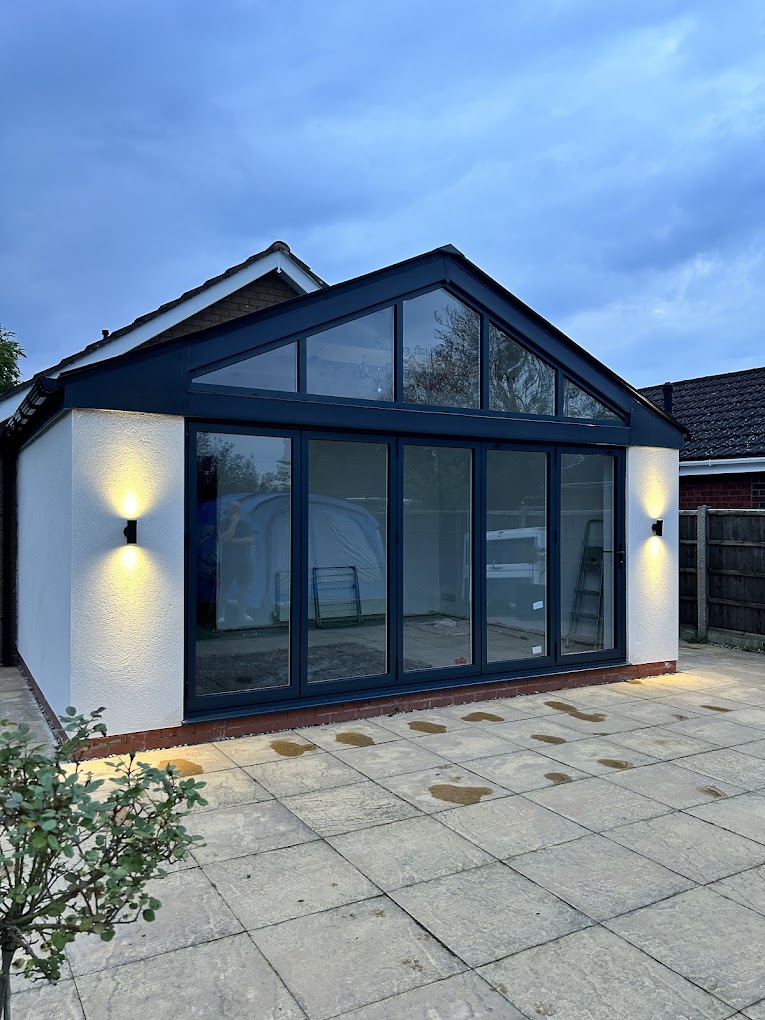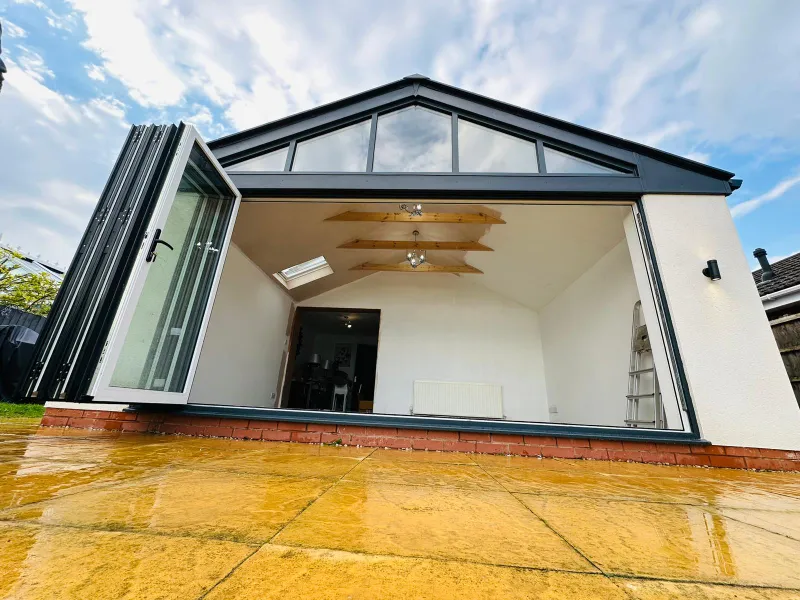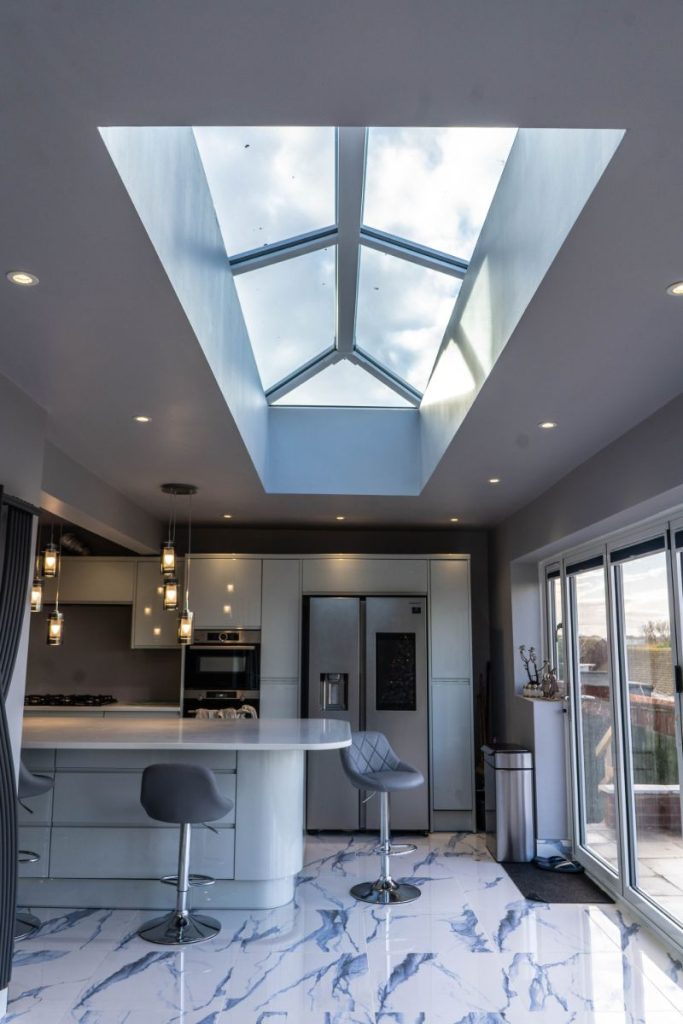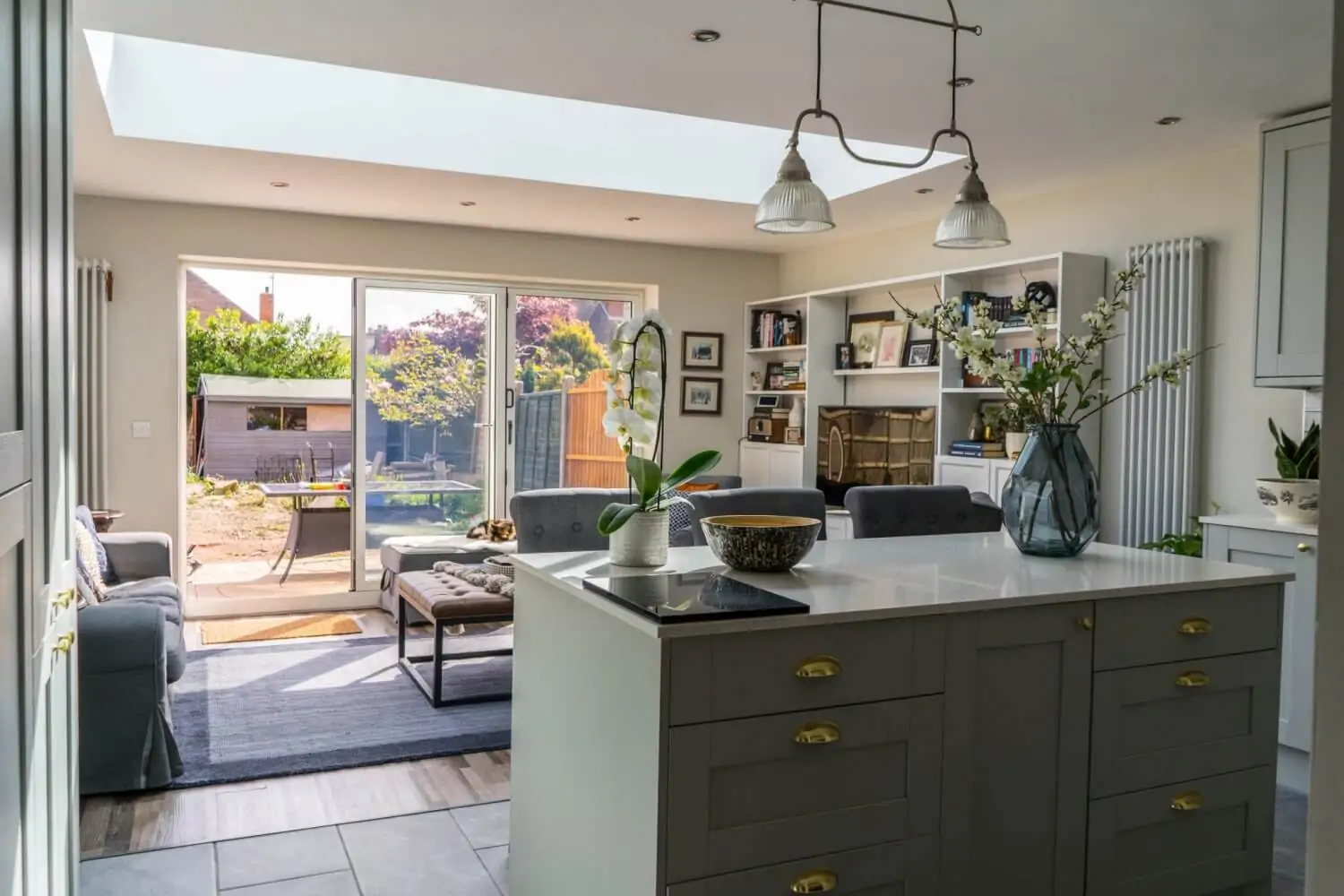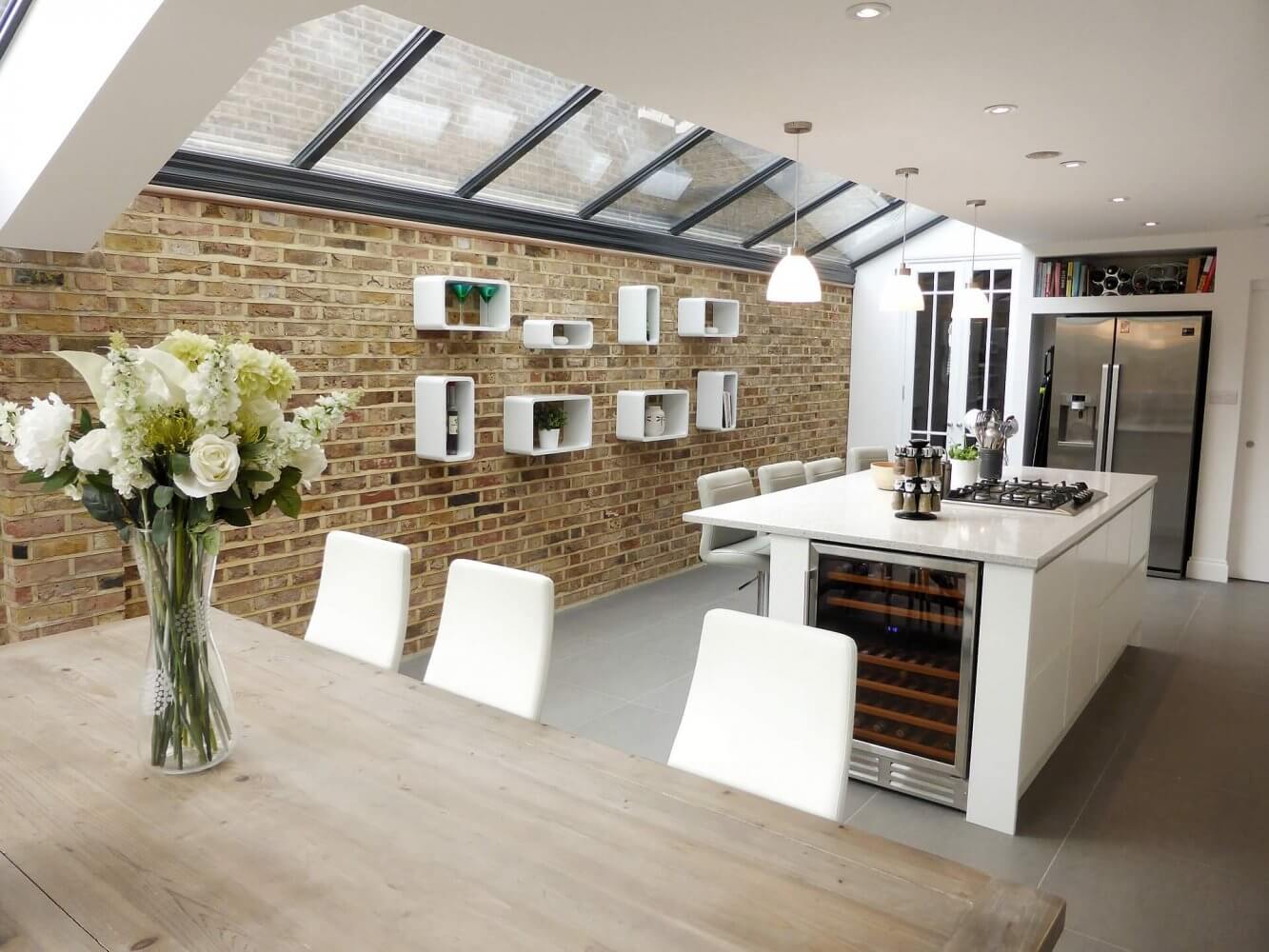When planning a single storey extension, one of the biggest decisions you’ll face is what type of roof to choose. Your extension roof protects your property, defines the look of your extension, affects how much natural light enters the space, and can impact planning permission and costs.
In this guide, we’ll walk you through the difference between a flat and pitched roof for single storey extensions, explain the benefits of each type, cover essential planning considerations, and help you understand what might work best for your specific home.
Flat Roof vs Pitched Roof
For most single storey extensions, you’ll be choosing between a flat roof and a pitched roof. Each has advantages, and the best option for you depends on your needs, budget, and style preferences.
Flat Roof Extensions
What is a Flat Roof?
Despite the name, flat roofs aren’t completely flat; they have a slight slope to allow water to drain away. They’ve become increasingly popular for modern extensions, particularly for rear extensions where simplicity is desired.
Why Choose a Flat Roof?
Flat roofs typically cost less than pitched roofs because they require fewer materials and less labour to construct. This makes them a practical choice if you’re working with a tight budget.
If you’re after a contemporary look, a flat roof extension can provide a sleek look that complements modern homes beautifully. A flat roof doesn’t eat into your interior height, giving you the maximum usable space inside your extension.
However, in some areas, particularly conservation areas, local planning authorities may prefer pitched roofs that match existing buildings.
Pitched Roof Extensions
What is a Pitched Roof?
A pitched roof has a noticeable slope, typically forming a triangular shape with a central ridge. Pitched roofs are the traditional choice and can be designed to match the style of more traditional houses. A common type is the gable roof, which features two roof sections sloping in opposite directions and meeting at a ridge line, with triangular gables and large windows at either end.
Why Choose a Pitched Roof?
A pitched roof extension often looks more natural with the original house, especially for older or more traditional properties. Well-constructed pitched roofs have excellent durability and can last decades.
The slope of a pitched roof allows rain to run off easily, reducing the risk of leaks and water damage, and the space created by a pitched roof can accommodate more insulation, potentially improving energy efficiency.
Pitched roof designs can add architectural features and visual interest to your home, with the triangular shape creating character that many homeowners find appealing.
However, pitched roofs require more materials and labour, making them generally more expensive than flat roofs. They also need more height, which could impact planning permission.
Planning Permission and Building Regulations
Your roof choice may be influenced by planning rules. Under permitted development rights, there are specific height restrictions for extensions, flat roofs are limited to 3 metres, while pitched roofs can go up to 4 metres provided the ridge doesn’t exceed the height of your existing house.
If your home is in a conservation area or exceeds these limits, you’ll need to apply for planning permission. The local planning authority may have preferences about roof styles that complement the surrounding area. All extensions, regardless of roof type, must also comply with building regulations covering aspects like structural stability, energy efficiency, ventilation, and drainage.
At West Midlands Home Improvements, we handle all the paperwork for planning permission and ensure your extension meets all building regulations requirements, meaning you don’t have to worry about any of these details.
Which Roof is Right for Your Extension?
Choosing a flat or a pitched roof depends on several factors. Your budget will likely play a significant role in this decision, and of the two styles, flat roofs generally cost less to build.
The architectural style of your existing home will also influence your choice. For traditional properties with existing pitched roofs, a pitched roof extension often creates a more harmonious look. The design of a pitched roof extension can complement the style of more traditional houses found throughout the UK. Conversely, modern or contemporary homes often pair beautifully with the clean lines of a flat roof extension.
Consider how you’ll use the new space as well. If you’re planning a kitchen extension or dining area where you want maximum natural light, a flat roof with a roof lantern might be the best option. The vaulted ceiling that is possible with some pitched roof designs can create a sense of spaciousness but may not be necessary for all types of rooms.
Roof Lanterns
It’s impossible to discuss roofs without mentioning one of the most popular roof options, a roof lantern. These raised, glazed structures sit on the roof, creating a stunning architectural feature that floods your extension with natural light. Roof lanterns are only suitable for flat or low-pitch roofs, as they need a level surface to sit on.
They’re particularly popular for kitchen extensions and dining areas, creating a bright atmosphere. A roof lantern is an excellent way to introduce natural light into your living space, making rooms feel larger and more welcoming. They could even reduce your bills as your need for artificial light reduces.
Ready to Start Your Extension Project?
If you’re planning a single storey extension and need advice on the best roof option for your home, our experienced team is here to help. We’ve completed numerous extension projects from Wolverhampton to Coventry, with both flat and pitched roofs.
We pride ourselves on helping you every step of the way, from the initial design and planning permission to managing the build itself. We aim to make the whole process as smooth and stress-free as possible.
Give us a call on 0121 368 6651 or fill out our contact form for a free, no-obligation consultation. We’ll visit your home, discuss your ideas, and help you decide on the perfect roof design for your extension.
Frequently Asked Questions
Do you offer finance options for extensions?
Yes, we understand that budget is a key consideration for any home improvement project. That’s why we offer various finance options to help spread the cost of your extension, making your dream space more affordable.
Will my choice of roof affect planning permission?
Yes, it can. Flat roofs have different height restrictions compared to pitched roofs under permitted development rights. In conservation areas, local authorities may prefer pitched roofs that match the character of surrounding buildings. We’ll advise you on the best approach for your specific situation.
What other services do you offer?
We offer a complete range of home improvement services, including double storey extensions, loft conversions, kitchen extensions, and garage conversions.
